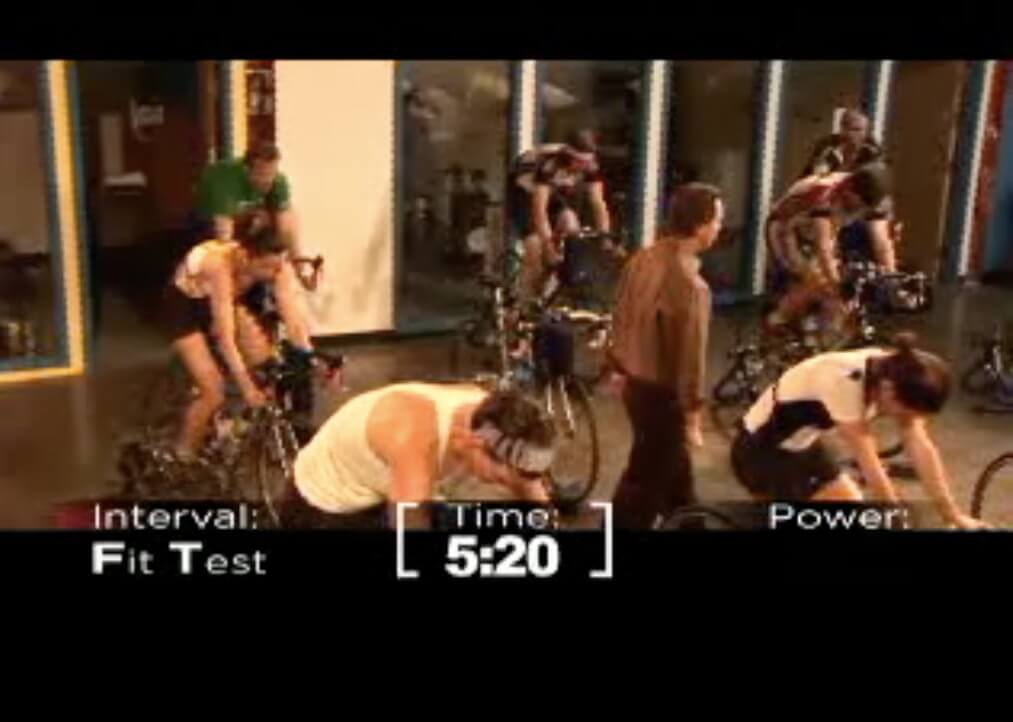As indicated in The Unpaved Hub’s article introducing the CTS Progressive Power Interval Training, we will post a summary of each class found in the CTS Progressive Power series. The summaries will briefly explain the intervals included in the class, and provide some tips based upon our years of experience using the program. Please see our initial article for an overview of the series or if there is any confusion about class numbering. First up is a summary of CTS Progressive Power Class 1 – Field Test.
Disclaimer: This article will be a bit longer than the rest in the series as there is a lot to cover.

Overview
The CTS Field Test works to establish the power and heart rate intensity ranges for each interval type used in the series. The Field Test is performed before starting any training block or program. Perform the Field Test when you are well rested.
- 6 minutes warmup
- 2 1 minute Power Intervals, 1 minute recovery after the first
- 4 minutes recovery/remaining warmup
- 2 8 minutes Field Test efforts, 10 minutes recovery after the first
- 10 minutes cooldown
Tip: All interval times are estimates as the coaches start and stop each effort in this series organically.
Interval Descriptions
- The warmups, recovery periods, and cooldowns in the CTS Progressive Power series are always performed at what we call a soft pedal or light spin. Find an easy gear and spin the pedals at 90 rpms and above.
- Power Intervals are maximal efforts. Hammer as hard as you can, but keep the cadence at 100 rpms or more.
- The Field Test efforts are like time trial efforts. Go as hard as you can for the eight-minute duration. Don’t leave anything in the tank.
Tip: Use the first 90 seconds or so of the Field Test efforts to find your rhythm. Try not to start too fast, and try to find a pace and gear you can hold for the entire effort. Keep the cadence relatively high. Don’t shift to a gear that causes you to grind or mash on the pedals. Your muscles will fatigue. Above 90 rpms is best. We find around the 100 rpm mark works best for us.
Tip: During the first Field Test effort, focus on it solely. Don’t worry about the second. Go as hard as you can. You will be able to crush both.
Tip: Keep your cadence during the recovery or rest periods at 90 rpms or more. The higher pedal cadence increases blood flow, and helps to flush out waste or lactate.
Critical Data to Collect from the CTS Field Test
- Average heart rate from each effort
- Average power from each (if you have a power meter)
Other Data to Collect
- Max heart rate from each effort
- Average cadence for the same
- Rate of perceived exertion for each (hereinafter “RPE”) (i.e., how hard it was) (handy CTS RPE chart can be found here)
Calculating Training Intensities (and Zones)
As we wrote in the initial article on the series, the foundation of our CTS training comes from its cycling videos and Chris Carmichael’s articles and books. In particular, The Hub uses Carmichael’s The Time-Crunched Cyclist book (hereinafter referred to as the “book”). The prescribed CTS workout training intensities from the book and videos are slightly different than the most recent intensities from CTS website.
Without going into the nitty-gritty about the differences, the current intensities are presented as power and heart rate at threshold, whereas the intensities in the videos and book are slightly different calculations of your CTS Field Test power and heart rate results. Rest assured that the ranges are consistent. We only bring this to your attention in the event you are familiar with the training intensities from prior CTS videos or books. Again, the most recent CTS resource for calculating traditional training zones and CTS workout training intensities is found on the CTS website. There is even a handy calculator at the bottom of the linked page. All you have to do is plug in your average heart rate and power. The ranges are calculated for you.
The current CTS workouts are slightly different from prior videos and the book. One is noteworthy here. The most recent list of workouts include, among others, Aerobic Tempo and Sweet Spot Tempo. The videos will only use Tempo, and do not differentiate between aerobic and sweet spot tempo. As we have said, we aren’t coaches, and we don’t pretend to play ones on TV. But, The Hub tries to stay in the Aerobic Tempo range when the videos prescribe Tempo intervals.
Once you complete the Field Test and calculate your workout intensities, you are ready to roll! Check out the next installment covering CTS Progressive Power Class 2 – Field Test Verification. Also, follow The Hub on its social media channels (links on the top and bottom of this page) or sign up for The Hub’s Newsletter (form on the right and bottom of this page).
